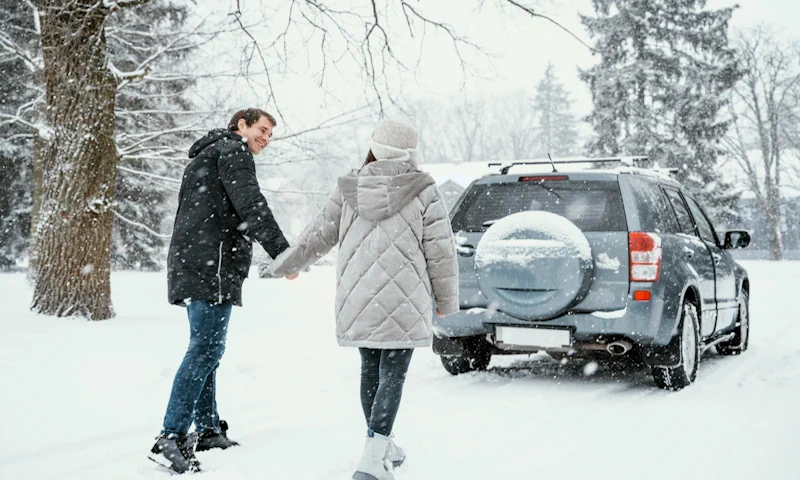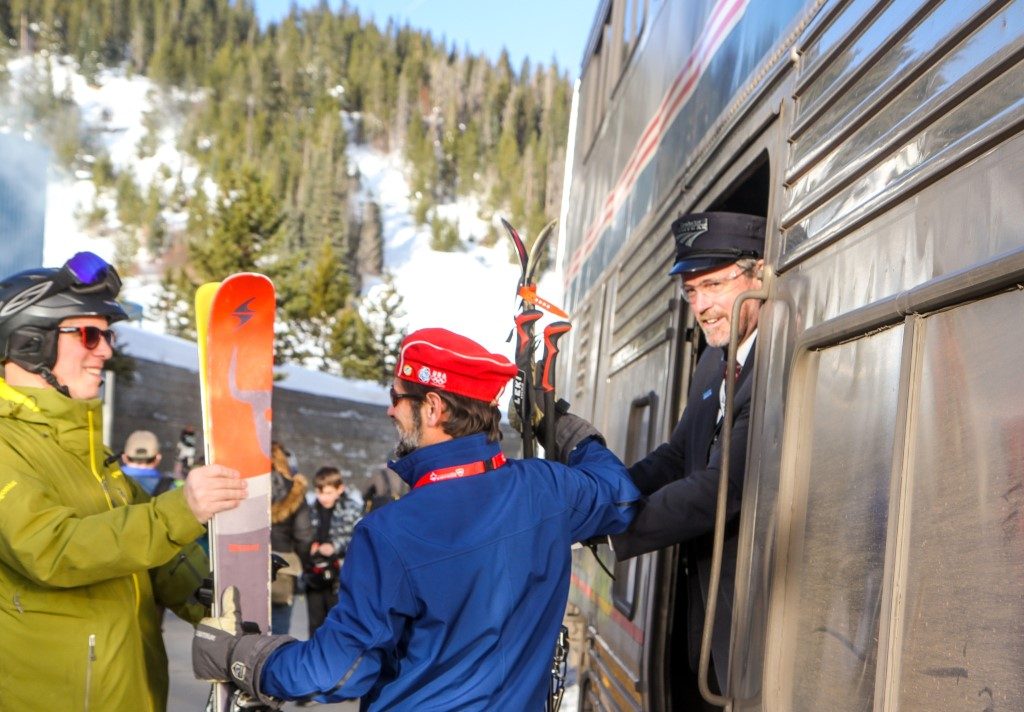Winter season comes with very critical and peculiar challenges for drivers. Therefore, they must be well-equipped with the necessary strategies to successfully navigate winter roads.
According to the Federal Highway Administration of the U.S. Department of Transportation, more than 70% of the roads in the United States are located in snowy regions. Due to the challenges of navigating snowy terrains, more than 1,300 commuters die and over 116,800 people suffer injuries from vehicle crashes caused by slushy, snowy, or icy roads annually.
Precautionary Measures to Take Before Driving On Winter Roads
Firstly, let’s consider a few tips you need to review before engaging the winter roads.
1. Install Winter Tires
The type of tires you use during winter will impact your driving experience. There are various tires designed for different weather conditions for excellent traction, grip, and handling.
If you live in extremely cold regions, I’ll advise you to get specialized winter and snow tires. These tires are called winter/snow tires for a reason. No matter the kind of sophisticated all-season tires you use, they cannot deliver top-notch traction in deep snow, ice, and slush. Therefore, investing in snow tires is worth it.
Studdable winter tires provide extra grip on ice and packed snow.
In addition, getting snow chains for your car tires can also be a good idea. They are designed to dig through ice and pack snow effectively.
However, it is worth noting that you can’t drive at a high speed with snow chains or studs on your tires. Moreover, make sure to only use them on packed snow or ice. Using them on clear roads can damage the road structure.
2. Study Your Proposed Route
While it may be best to stay back at home during severe winter conditions, some situations may necessitate driving out.
If you must go out during winter, ensure to carefully study your proposed route ahead of time. Check out for traffic updates, as well as local weather reports. This will help you prepare yourself for whatever situation you’ll encounter on the road.
3. Clear Off Snow
Clear off snow and ice from vehicles before hitting the road. Driving with snow on your hood or roof can pose a danger. While driving, the snow on your car roof can suddenly fall on your windshield thereby blocking your view. Also, make sure to clear off snow from the exhaust pipe to avoid carbon monoxide poisoning.
4. Inspect Your Tires
Tire inspection is crucial as they are the only part of your vehicle that encounter directly with the snow or ice on the road.
In cold temperatures, the pressure inside tires decreases. Make sure to inflate the tire to the recommended pressure mentioned in your owner’s manual.
Apart from checking the tire pressure, it is important to inspect your tires for any physical damage like low tread depth, sidewall bulge, or deep cracks. They can pose a significant danger during long trips. There should be enough tread depth on tires. Deep treads provide the necessary grip on snow-covered roads.
5. Warm Up Your Car Engine
Vehicles before the 1990s were built to run on carburetors instead of fuel injections in modern cars. This component had to warm up for several minutes, especially during cold temperatures; otherwise, the vehicle would stall out.
However, generally, the motor oil in an internal combustion engine usually drains to the bottom of the engine after sitting for hours. When you turn on the vehicle, the oil circulates in the engine. This process lubricates the cylinders, pistons, and other moving engine parts.
On a regular sunny day, the circulation and lubrication process occurs almost immediately, but this isn’t the case during cold weather. During winter, the oil tends to circulate slightly slower.
That’s why it’s important to start your car and idle for about 60 – 120 seconds to warm up the engine before driving out. This would allow the oil to circulate properly for maximum engine performance.
6. Get a Winter Emergency Kit
Be sure to get a winter emergency kit for your car. The emergency kit should include items such as:
- A first-aid box
- A snow shovel and Ice scrapper
- Mobile chargers
- A flashlight
- Jumper cables
- Reflective triangles
- Snow boots
- A fire extinguisher
- Duct tape
- A snow brush
- Tow strap
- Traction mats
You may also want to include extra winter clothes, a raincoat, snow gloves, and a tire-changing kit. These items are necessary in case of a sudden vehicle breakdown.
7. Use Windshield Snow Wipers and Deicer Fluids
Generally, wipers help to keep your vehicle’s windshield free from dust, rain, pollen, as well as other air-borne debris. While windshield wipers are important in summer, they’re much more important during winter. They ensure that snow is eradicated from your windshield for enhanced visibility.
Meanwhile, windshield deicer helps to clean your windshield and melt the snow quickly if it accumulates on the windshield.

8. Inspect Your Car’s HVAC System
The HVAC (Heating ventilation & air conditioning) system inspection is very important during winter. This is because the air conditioning system helps to keep your windshield free of steam and frost. Also, a proper working heater will help you regulate the temperature in your car to keep you warm during cold temperatures.
9. Antifreeze Agent In Radiator
There are two extremes you must avoid in your vehicle’s engine: too high or too low temperatures. The antifreeze agent in your radiator helps to ensure that your engine doesn’t approach these two extremes during hot or cold weather.
Therefore, you must ensure to keep the fluid within the recommended level during winter conditions. This will prevent the water in your car engine’s cooling system from freezing.
10. Keep the Gas/Fuel Tank Full
A vehicle’s fuel lines are susceptible to freezing during cold temperatures in winter. This can lead to your vehicle stalling out. Hence, you must ensure to keep your gas tank full or at least half full during winter months.
Also, keeping your fuel tank full or half full will help you minimize the exposed surface area. This will further militate against the formation of condensation.
Precautionary Measures to Take During Driving On Snowy Roads
Once you’re sure of attending to everything you need to put in place before driving in snow, we can proceed further.
Now, ensure to follow these tips when driving in snowy conditions:
1. Drive Slowly
Ever heard of the axiom, “Slow and steady wins the race”? While that may not be obtainable in many cases, it holds true when driving in snow. Besides, you aren’t competing in a race with anyone on the road!
A speed of 30-35 mph is ideal on snow-covered roads.
Be smooth with your accelerator, brakes, and steering. When approaching a curve, carefully engage the brakes before turning the wheel.
On the other hand, when going uphill, keep a good distance from the vehicle in front. This will enable you to maintain a steady speed.
Also, when going downhill, use a low gear and avoid slamming your brakes; instead, pump them gradually.
2. Switch On Your Vehicle’s Headlights
Driving under severe snow conditions can affect visibility. So, be sure to switch on your vehicle’s headlights to enable other drivers on the road to see you easily.
Meanwhile, avoid using fog or brighter lights on the road. Although they enhance your sight, the brightness can blind other drivers coming from the opposite direction. Fog lights should only be used during foggy weather.
3. Maintain a Reasonable Distance From the Vehicle In Front
Traffic collision occurs during winter driving when vehicles stay too close to each other.
Again, remember that severe snow affects visibility. So, maintain a reasonable distance as you follow behind the vehicle in front of you.
Stopping distance is usually longer in the snow; hence, maintaining a good following distance can give you enough braking space. You may want to keep your following distance somewhere around 8 seconds.
4. Drive with Focus
Driving in snowy conditions requires more focus. This is because you don’t only pay attention to your vehicle. You also need to keep an eye on other drivers/vehicles on the road.
Ensure to observe the vehicles in front and behind and those attempting to overtake. Also, do everything possible to minimize all forms of distractions, such as a phone call.
5. Engage the Anti-Lock Braking System (ABS)
Most modern vehicles are fitted with an anti-lock braking system (ABS). This feature prevents your car’s brake from seizing, especially when you engage it forcefully during an emergency.
So, ensure to engage the anti-lock braking system when driving in snow. If your vehicle does not have the ABS, don’t worry. Simply pump your brakes gently instead of slamming the pedal at once.
While slamming the brakes may appear to be the best thing during slippage, it’s most likely the worst in snow.
6. Avoid Using Cruise Control
Don’t ever use cruise control when driving in snowy or rainy conditions. Engaging cruise control in snow can make you lose control as the system may not react swiftly as expected. Typically, a driver may react faster during loss of traction than the cruise control system. So, it would be best to avoid using the cruise control.
7. Drive On Fresh Snow
Avoid other vehicle’s tire Tracks. When a vehicle goes over snow, it compresses the snow, making it more slippery. Prefer to drive on fresh snow-powder during winter. This is because packed snow is relatively difficult to drive on compared to fresh snow.
8. Watch Out for “Black Ice”
The term “black ice” refers to a thin yet slippery coating of glaze ice on the road. Typically, during the day, ice and snow can thaw.
However, when they melt, the snow can become a thin layer of ice, especially when temperatures go below freezing level in the afternoon or evening.
Driving over black ice can be hazardous during wintry conditions. However, it may be a little difficult to spot since it is transparent, and blended with the black road asphalt. Therefore, you must be careful when transitioning to clear roads as they may not be as clear as you think.
If you are using dedicated winter tires, you are good to go. But make sure to keep the speed low on black ice to avoid any chances of slippage.
Since spotting black ice can be somehow tricky, if you suddenly encounter a patch of black ice, ensure to stay calm. Simply avoid accelerating or braking swiftly to avoid loss of traction.
If your car is front-wheel drive or rear-wheel drive with traction control or ABS, carefully identify an open space and drive toward that area. Accelerate a little and steer carefully as you traverse in that direction.
Conversely, if your rear-wheel drive has no traction control or ABS, carefully ease off the accelerator and steer gently as you drive toward the open area. This can help maneuver the situation.
Final Words
Driving in snow and ice is not for the fainthearted. However, whether you’re a pro driver or an amateur, it may be difficult to ascertain if the odds will be in your favor.
Undoubtedly, it is possible to guarantee your safe driving as you maintain caution. However, you can’t determine how well the other drivers are capable of handling the snowy conditions. Therefore, be sure to stick to these tips for driving safely in snowy regions.






